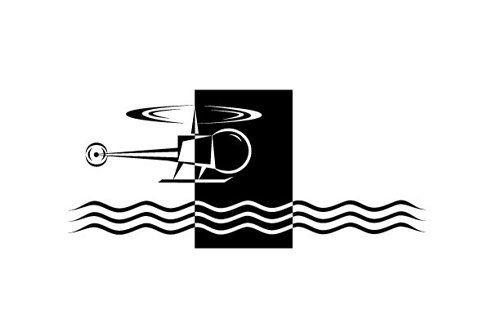
Marine & Air Transportation
Helicopters
1998
The first use of helicopters in transportation to offshore platforms was carried out at the request of Kerr-McGee and Humble Oil & Refining Co. Bell Helicopters had developed the leading equipment in this field--the 3-person Model 47--and recognized the opportunity by forming the company Petroleum Bell Helicopters (PBHI). One of the pilots taking this decisive first leap was Al Danner who flew to a Kerr-McGee platform 8-10 miles offshore in 1948 (the rig was awaiting a tool from shore). A flat area on the LST anchored next to Humble's rig 28 served as landing pad for one of the first helicopters to be flown offshore. With helicopters now the globally accepted mode of transportation to take crews and equipment to offshore sites, all rigs, platforms, and vessels have permanently installed helipads and refueling stations. Robert L. Suggs, Jack Lee, Larry Gussman and Maurice "Dookie" Bayon developed Petroleum Helicopters Inc. (PHI) from 1949 onwards to support seismic crews in Louisiana and offshore oil and gas industry, providing safe, reliable transportation and support to operations worldwide.
Recognizing the pioneering efforts of the following people and companies who contributed to the development of this technology:
Maurice "Dookie" Bayon, Al Danner, Larry Gussman, Jack Lee, Robert L. Suggs
Bell Helicopters, Humble Oil & Refining Co. (ExxonMobil), Kerr-McGee, Petroleum Helicopters, Inc.
Supply Boats
1998
Rigs had to be supplied with drilling mud, cement, water, spare parts, groceries and people, all of which required transport. Initially, surplus World War II vessels, wooden fishing boats, shrimp trawlers, and oyster luggers were used. The development of the fit-for-purpose supply boat was a key technology in the development of offshore oilfields. Brothers Alden "Doc" and John Laborde developed the concept of a purpose-built boat in 1955 using a bow wheelhouse and a long flat after deck that became the standard for Offshore Supply Vessels (OSVs) for the next 40 years. The Ebb Tide in 1955 was the first in the fleet of offshore supply vessels in the world.
Recognizing the pioneering efforts of the following people and companies who contributed to the development of this technology:
Alden J. "Doc" Laborde, John P. Laborde Tidewater
Anchor Handling Vessels
2010
With the first offshore well drilled from a moored tender assist MODU in 1947, the need to handle mooring system’s anchors, buoys and mooring lines for drilling, construction and pipe laying barges was born. In the early to late 1950s in the Santa Barbara Channel, California, coring units and MODUs with small anchors and only 4 to 6 mooring wire ropes were handled by standard tug boats with their normal towing winches. Corresponding conventional anchor handling tugs were used in the Gulf of Mexico and Mid East for construction. As construction and pipe laying barges increased in size as did MODUs, their mooring system components also grew in size and complexity necessitating larger purpose built AHVs with more horsepower fitted with gantry cranes, open stern decks with the bridge on the bow, and “stern rollers” to help lift equipment on the deck. In the ‘60s and early ‘70s the development of multipurpose vessels (AHTS) appeared that could handle mooring equipment, act as a supply vessel and also tow MODUs and construction barges. As mooring line components further increased in size, weight and length due to increased water depth requirements and more severe operating environments, it became necessary to develop better seamanship and even more capable AHVs with large bow thrusters for maneuverability, sophisticated navigation systems to set/retrieve anchors, and innovative deck equipment to handle the larger mooring equipment. Further development led to AHTS’ that could also carry large quantities of liquid mud as well as dry bulk material. Today AHVs and AHTS’ have grown into ships with some over 250 ft. long, bollard pulls of over 200 tons, over 20,000 Hp with twin controllable pitch (CP) screws, and double winches that can each pull and brake over 1,500,000 lbs as well as conduct dynamical payout with long work wires to handle large anchor and chain loads.
Recognizing the pioneering efforts of the following individuals and organizations that contributed to this technology:
William (Bill) Bright, Dino Chouest, Laney Chouest, Burt Keenan, Charlie Slater, Nolty Theriot, Ken Waldorf, Tony Wilbraham, Edison Chouest Offshore, Farstad Shipping ASA, Maersk Supply Service, Offshore Logistics (Bristow Group Inc.), Offshore Supply Association Ltd., Smit-Lloyd (now Smit International N.V.), Tidewater, United Towing (now Maersk Supply Service), Zapata Marine Services (now Tidewater).




